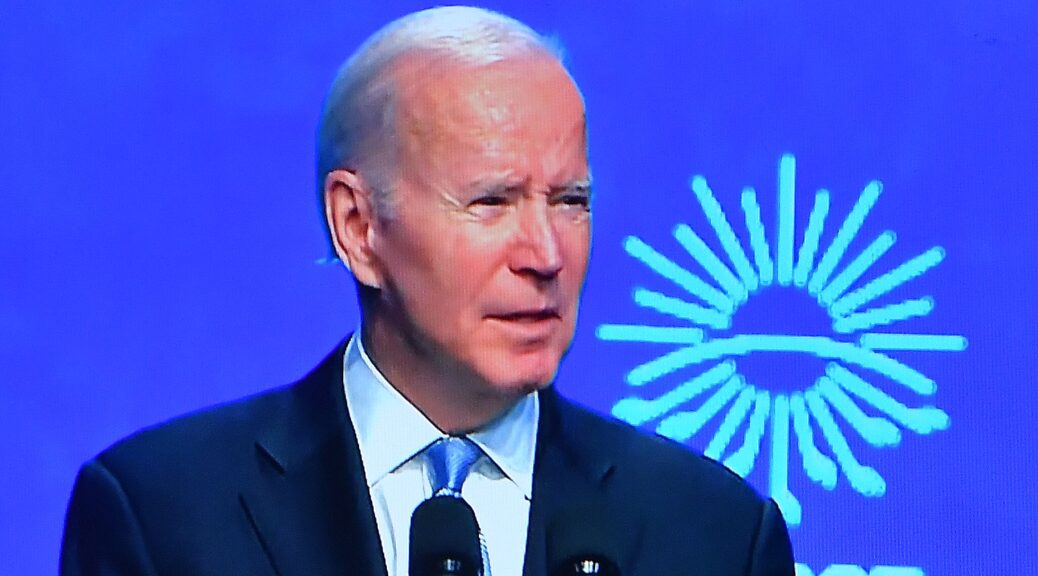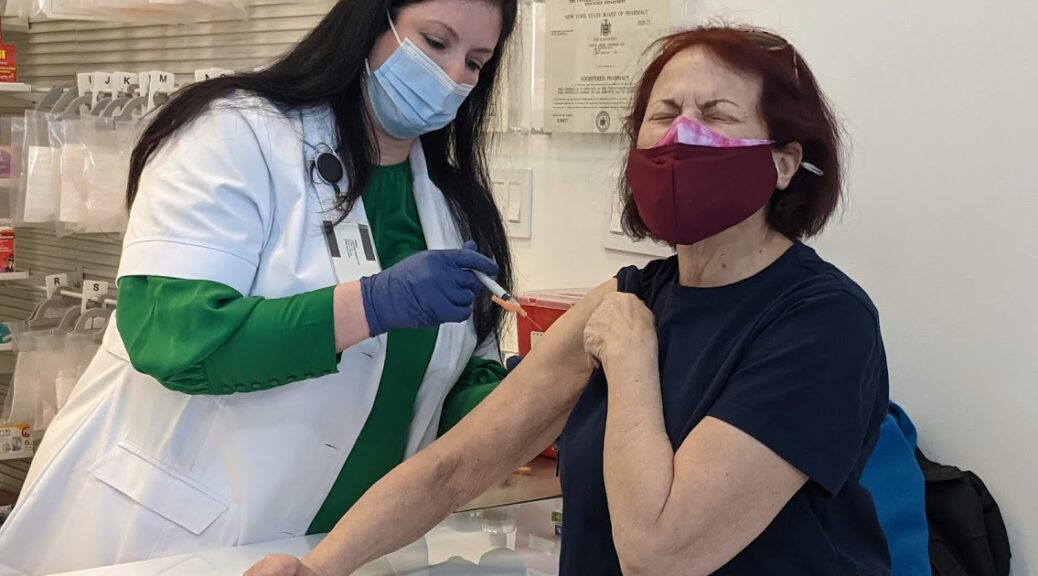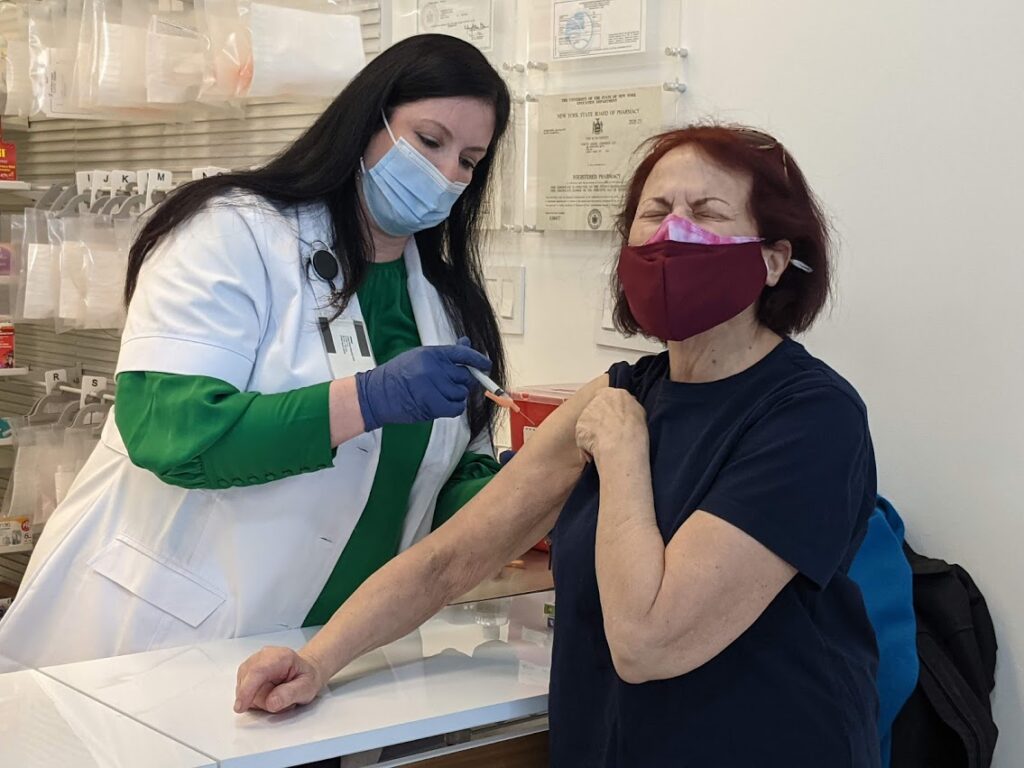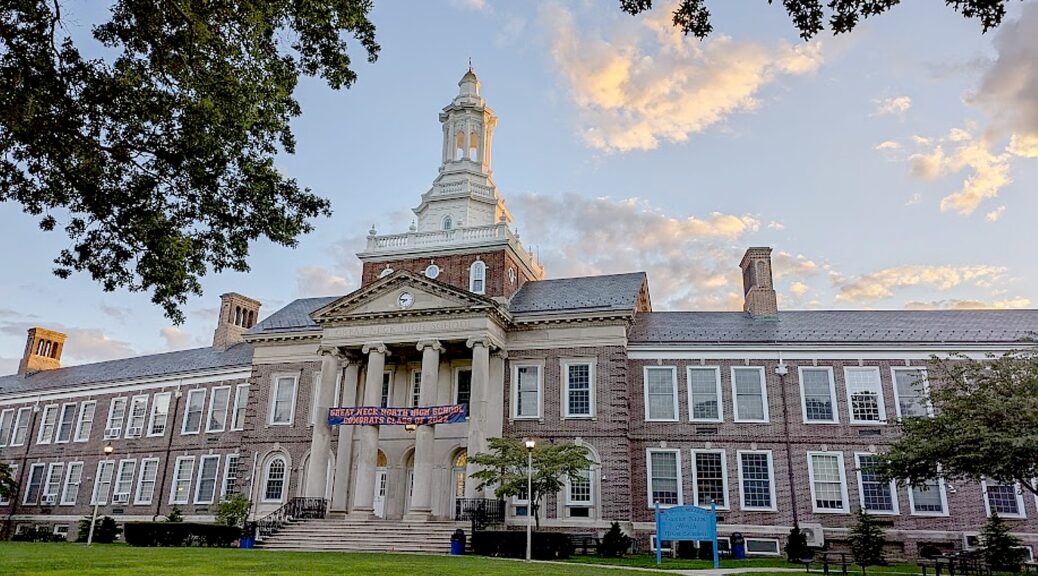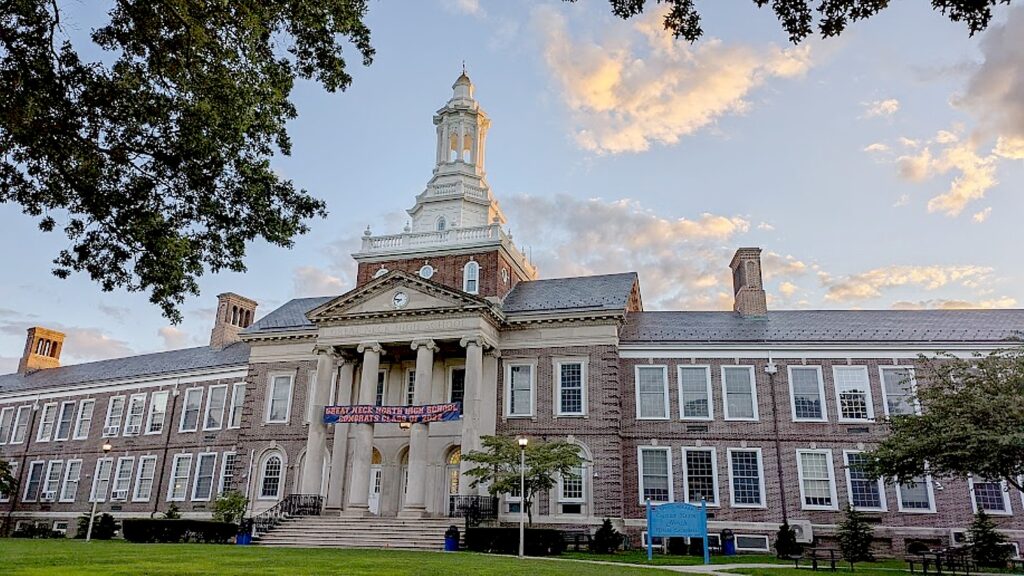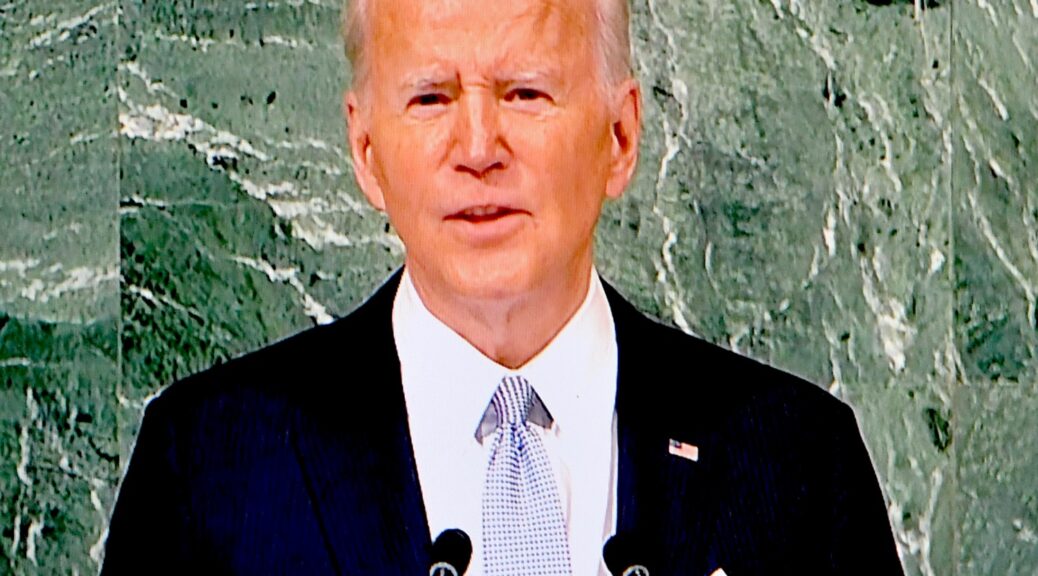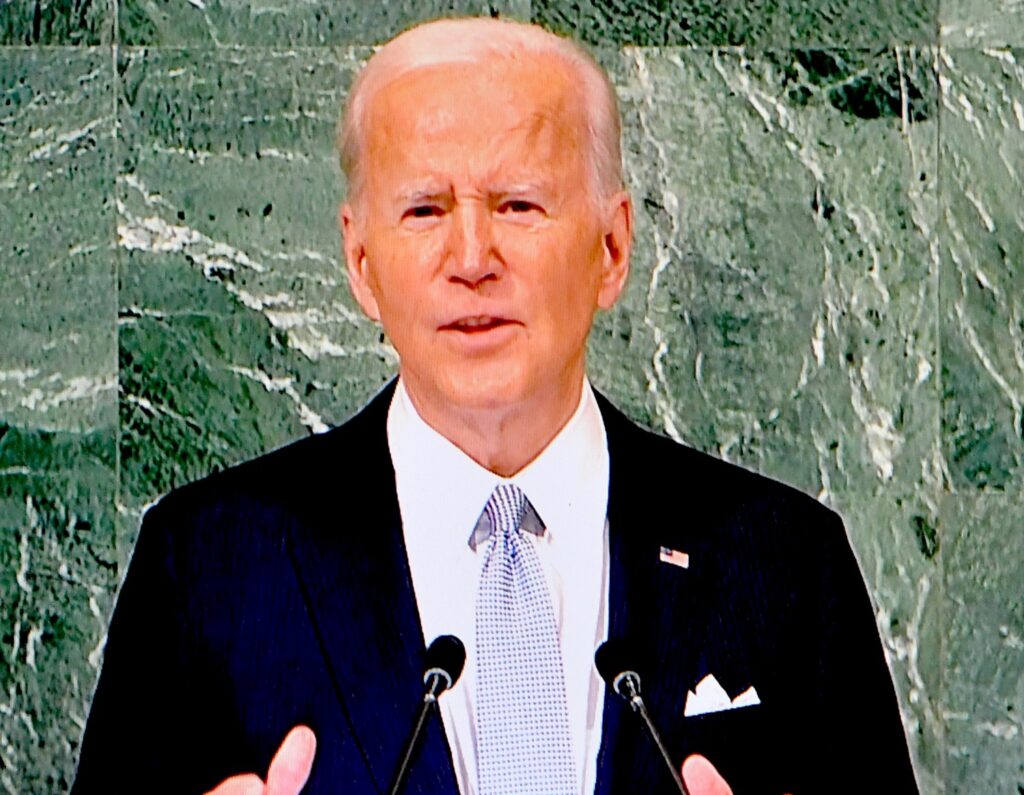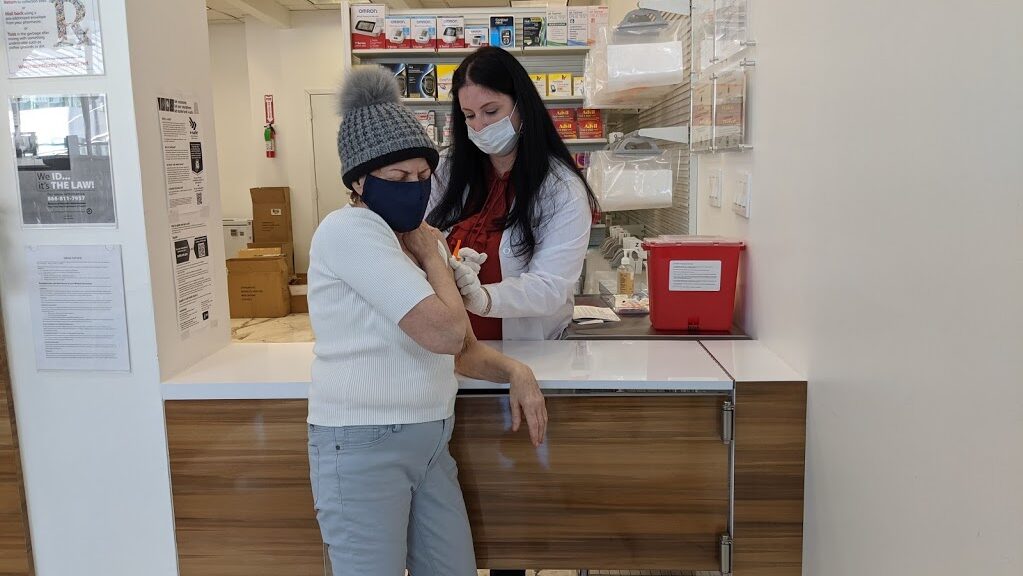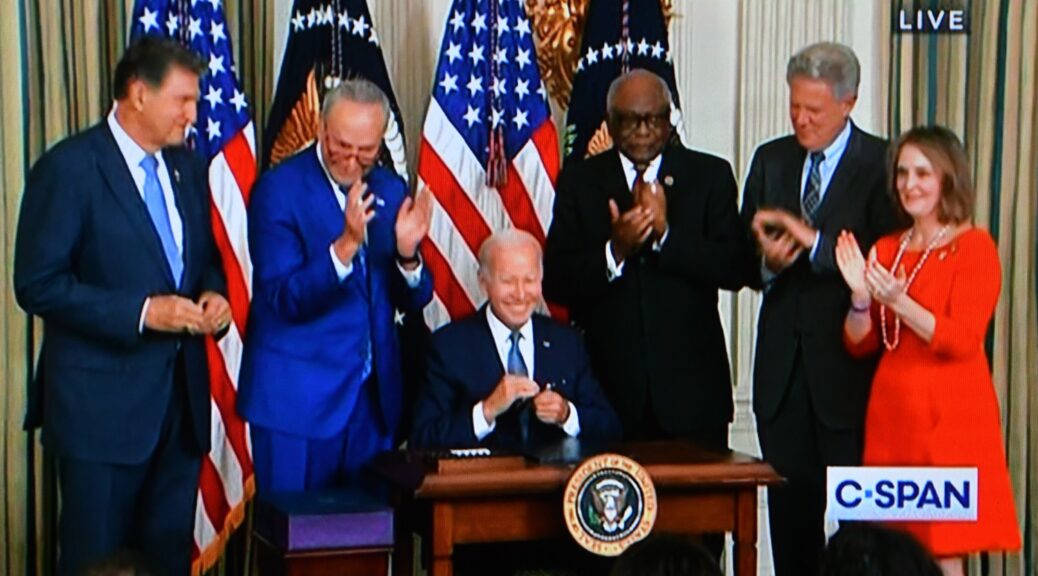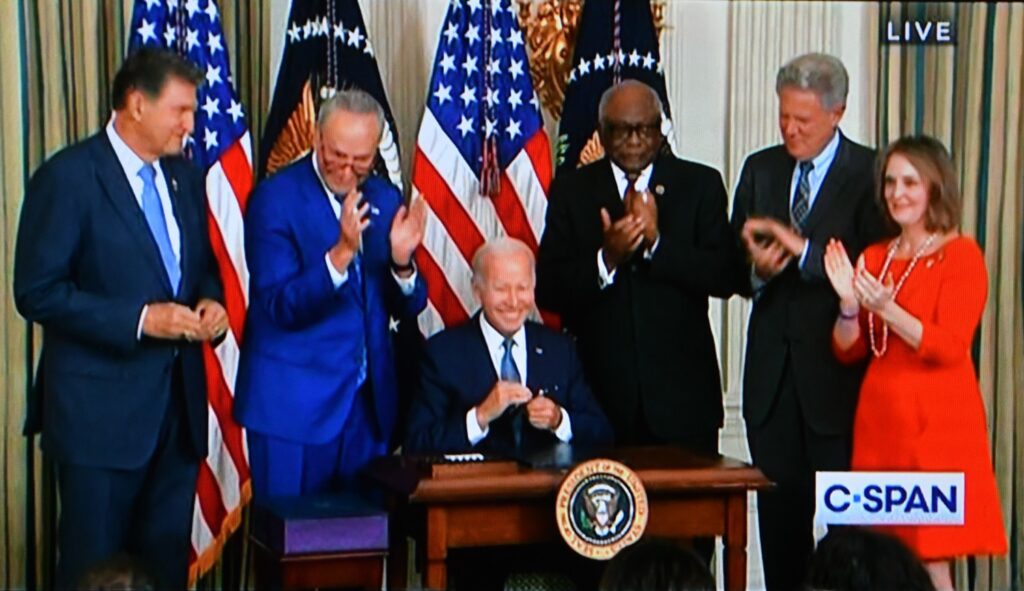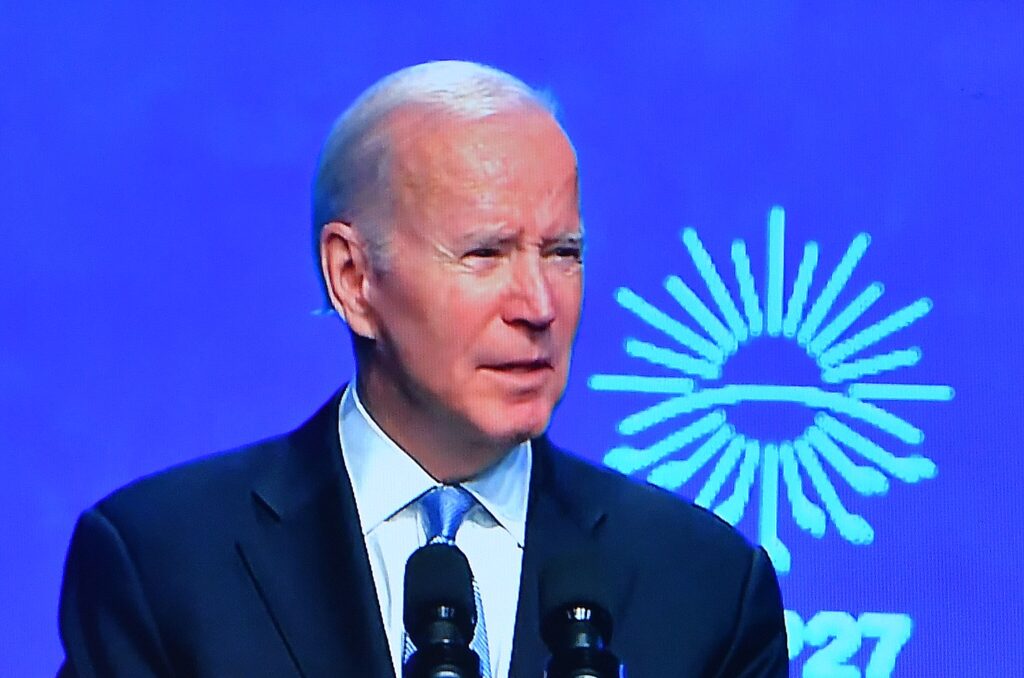
The White House issued this fact sheet on new initiatives President Joe Biden announced at COP27 to strengthen US leadership in tackling climate change:
Today at the 27th U.N. Climate Conference (COP27), President Biden announced new initiatives to strengthen U.S. leadership tackling the climate crisis and galvanize global action and commitments. President Biden demonstrated that the United States is following through on its existing commitments and initiatives while also accelerating new and expanded domestic and global efforts. As President Biden said at last year’s COP in Glasgow, this is a decisive decade – and the United States is acting to lead a clean energy future that leverages market forces, technological innovation, and investments to tackle the climate crisis. The initiatives the President announced today also reflect the global imperative to support vulnerable developing country partners in building resilience to a changing climate, helping them cope with a problem they did not create.
In less than 18 months, President Biden has renewed United States leadership in the fight against climate change. The President is delivering on his Day One promises, positioning the United States to achieve our ambitious climate goals. President Biden has spearheaded the most significant domestic climate action in U.S. history, including passing the historic Inflation Reduction Act, signing the Bipartisan Infrastructure Law, ratifying the Kigali Amendment to the Montreal Protocol, spurring a new era of clean American manufacturing, enhancing energy security at home and abroad, and driving down the costs of clean energy for consumers in the U.S. and around the world.
These efforts reflect President Biden’s belief that climate security, energy security, food security, and water security go hand-in-hand. As Russia’s unjust war in Ukraine disrupts energy markets, strains economies with rising prices, and threatens vulnerable countries with severe food shortages, efforts to accelerate climate action, growing clean energy economies, climate smart agriculture, and global resilience have become all the more urgent.
The initiatives the President is announcing and that the U.S. delegation will highlight throughout COP27 include:
- Bolstering Global Climate Resilience – including doubling the U.S. pledge to the Adaptation Fund to $100 million and announcing over $150 million in new support to accelerate the President’s Emergency Plan for Adaptation and Resilience (PREPARE) efforts across Africa. These build on the over $20 million that President Biden has announced this year to accelerate PREPARE’s work in Small Island Developing States.
- Accelerating Global Climate Action – including launching a new initiative to support Egypt in deploying 10 GW of new wind and solar energy while decommissioning five GW of inefficient natural gas generation, strengthening proposed domestic methane regulations in the oil and gas sector that would reduce U.S. methane from covered sources by 87 percent below 2005 levels as well as other domestic and international action to tackle methane emissions and advance the Global Methane Pledge, and announcing new actions that would make the United States the first national government to require major suppliers to set Paris Agreement-aligned emissions reduction goals – leveraging the Federal Government’s over $630 billion in annual purchasing power.
- Catalyzing Investment at The Scale Required to Tackle the Climate Crisis – including launching new and innovative approaches that strategically use public finance to unlock billions in private investment, such as the “Climate Finance +” initiative that will support developing countries in issuing green bonds; launching the Sustainable Banking Alliance to deepen developing countries’ sustainable financial markets; and making strategic investments that help to mobilize billions in private finance and facilitate the export of U.S. clean technologies.
- Engaging All of Society in Tackling the Climate Crisis – including launching a Climate Gender Equity Fund, an Indigenous Peoples Finance Access Facility, and new exchanges to empower youth across the world to be leaders on resilience and clean energy in their communities.
The comprehensive list of announcements by the U.S. delegation at COP27 includes:
BOLSTERING GLOBAL CLIMATE RESILIENCE:
President Biden announced additional efforts to further accelerate the implementation of his Emergency Plan for Adaptation and Resilience (PREPARE), which aims to help more than half a billion people in developing countries adapt to and manage the impacts of climate change this decade. These initiatives reflect the fact that a dollar invested in adaptation can result in $4-10 or more in benefits. These additional efforts, as well as those announced by the United States during COP27, subject to Congressional notification and the completion of domestic procedures, include:
- Doubling Our Pledge to the Adaptation Fund to $100 million – In Glasgow, we announced our intent to make our first-ever contribution to the Adaptation Fund through an initial pledge of $50 million. Today, President Biden announced that the United States will double this multi-year pledge to $100 million.
- Accelerating Adaptation in Africa – President Biden announced over $150 million to accelerate PREPARE’s work across the continent, in support of the Adaptation in Africa initiative he and President El-Sisi announced in June. This includes U.S. support for:
- Expanding access to early-warning systems for all of Africa – According to the International Federation of Red Cross and Red Crescent Societies, better early-warning systems and adaptation can cut the number of people who need emergency assistance in half by 2030 — and from 200 million to just 10 million by 2050. Today, President Biden announced new U.S. support to accelerate these efforts, including through a $13.6 million contribution to the Systematic Observations Financing Facility that will help fill weather, water, and climate observation gaps in Africa. The United States will also invest $15 million to support the co-development and deployment of early-warning systems in Africa, leveraging the U.S. National Oceanic and Atmospheric Administration (NOAA)’s long-standing relationships with national and regional weather services across Africa. Our scientists and emergency preparedness experts will work side by side with African partners to bring early warnings to Africa and support communities, leaders, businesses, and people in applying this information to reduce impacts and save lives.
- Building the capacity of African decision makers of today and tomorrow to accelerate adaptation across the continent for years to come – This includes contributing $10 million to support the launch of a new adaptation center in Egypt – the Cairo Center for Learning and Excellence on Adaptation and Resilience, announced by Egypt, which will build adaptation capacity across the African continent. As part of our support for the Cairo Center, we are also working with African universities and central ministries to raise awareness of climate risk and strengthen capacity to apply adaptation solutions to manage those risks, especially when it comes to fiscal policy, budgeting and planning. The United States is contributing an additional $2 million to the Resilience and Adaptation Mainstreaming Program to build the capacity of governments to manage climate risks and access finance.
- Supporting locally-led efforts to adapt to climate impacts – This includes an additional $3.5 million in support for the Least Developed Countries Initiative for Effective Adaptation & Resilience, which is helping African countries like Uganda, Malawi, Gambia, and Burkina Faso to enhance access to adaptation finance for the most vulnerable.
- Expanding access to risk-based insurance for the most vulnerable – This includes working with multilateral development banks and supporting the G7 Global Shield against Climate Risks to protect vulnerable people — in Africa as well as the Caribbean, Central America, and the Pacific. In this context, the United States is enhancing its support for regional risk insurance pools, including contributing $12 million to the Africa Disaster Risk Financing Program and $12 million to ARC Ltd, helping countries cope with extreme weather events, food insecurity, and other issues exacerbated by climate change.
- Mobilizing the private sector for adaptation and resilience – – The United States is contributing an additional $25 million to the African Union’s flagship Africa Adaptation Initiative (AAI), which is hosted by the Egyptian government, to launch the AAI Food Security Accelerator, which will dramatically speed- and scale-up private sector investments in climate resilient food security in Africa. With U.S. support, the Accelerator will help identify, structure and de-risk a pipeline of transformative adaptation investments in food security, helping to unlock private capital that is already standing ready to invest in these innovative solutions, ranging from cold storage logistics to climate resilient agriculture and post harvesting processes. The United State is also launching a Call to Action to the private sector to tap into their ability to develop innovative adaptation solutions in ways that the public sector cannot, providing an additional $3.8 million to CRAFT TA Facility, and $2 million to launch an adaptation window of the Global Innovation Lab for Climate Finance to help develop new financial instruments and mechanisms to harness private investment in adaptation.
- Further supporting climate smart food systems in Africa – This includes helping countries and communities to adapt their food systems to climate impacts, through at least $100 million in adaptation funding in FY 2022. USAID also invested more than $300 million in Resilient Food Security Activities in FY 2022 across Africa that supports agricultural development and food security. This year, Feed the Future expanded to eight additional African countries, the new Global Food Security Strategy further elevated inclusive and climate-resilient food systems, and climate information services work was expanded. These efforts are yielding results. For example, in 2022 in partnership with the Bill and Melinda Gates Foundation and the Foundation for Food & Agriculture Research, climate-resilient maize varieties were planted on seven million hectares across 13 African countries. These heat, drought, and flood resistant maize varieties provided a 25% yield advantage, benefiting more than 44 million people.
- Advancing Climate Security Through Sahel-Climate Advocacy and Peacebuilding with Pastoralists – This initiative aims to reduce the risk of farmer-herder climate change-related conflict in communities spanning the border of Niger and Benin by concurrently increasing herders’ access to political participation in local and national government and improving herders’ and farmers’ access to climate forecasts of rainfall, droughts, and other environmental factors.
- Expanding access to early-warning systems for all of Africa – According to the International Federation of Red Cross and Red Crescent Societies, better early-warning systems and adaptation can cut the number of people who need emergency assistance in half by 2030 — and from 200 million to just 10 million by 2050. Today, President Biden announced new U.S. support to accelerate these efforts, including through a $13.6 million contribution to the Systematic Observations Financing Facility that will help fill weather, water, and climate observation gaps in Africa. The United States will also invest $15 million to support the co-development and deployment of early-warning systems in Africa, leveraging the U.S. National Oceanic and Atmospheric Administration (NOAA)’s long-standing relationships with national and regional weather services across Africa. Our scientists and emergency preparedness experts will work side by side with African partners to bring early warnings to Africa and support communities, leaders, businesses, and people in applying this information to reduce impacts and save lives.
- Accelerating Adaptation in SIDS – The United States has also announced over $20 million to accelerate PREPARE’s work in SIDS. This includes:
- Expanding early-warning systems in the Pacific SIDS – This includes $15 million to increase the capacity of developing countries to understand, anticipate and prepare for climate impacts to public health and safety, food security, water resources, and coastal areas, which President Biden announced at the historic U.S.- Pacific Island Leaders Summit. NOAA will also provide university scholarships to five individuals from the region to communication increase the pipeline of qualified forecasters able to deliver climate-smart decision support. Additionally, NOAA will install roughly 20 satellite units across the region ensuring these forecasts and products reach the last mile.
- Supporting climate resilience and sustainable development in SIDS through the Local2030 Islands Network – This includes advancing island-led resilience through engagement and technical support through the Network, which currently includes 20 island economies representing diverse geographical regions across the globe, with the largest concentration of members currently in the Pacific and Caribbean. NOAA will expand its support for the Network to foster peer-to-peer learning opportunities, such as communities-of-practice, and support capacity-building activities, including training, research, extension and engagement, leveraging $4.5 million in new funding.
- Supporting storm surge mapping – Starting with the Federated States of Micronesia, NOAA and USAID will develop storm surge risk maps to improve understanding of storm surge flooding vulnerability from landfalling tropical cyclones, providing critical information to save lives and avoid climate impacts.
- Expanding early-warning systems in the Pacific SIDS – This includes $15 million to increase the capacity of developing countries to understand, anticipate and prepare for climate impacts to public health and safety, food security, water resources, and coastal areas, which President Biden announced at the historic U.S.- Pacific Island Leaders Summit. NOAA will also provide university scholarships to five individuals from the region to communication increase the pipeline of qualified forecasters able to deliver climate-smart decision support. Additionally, NOAA will install roughly 20 satellite units across the region ensuring these forecasts and products reach the last mile.
- Supporting Climate Affected Vulnerable Migrants – The United States announced a contribution of $5 million to the Migration Multi-Partner Trust Fund to support climate-affected vulnerable migrants. This program underscores our commitment to the vision of the Global Compact for Migration, including improving cooperation on international migration. It also advances the Biden Administration’s climate strategy, reflected in the 2021 White House Report on the Impact of Climate Change on Migration, to address the impact of climate change on vulnerable populations across the globe.
ACCELERATING GLOBAL CLIMATE ACTION:
President Biden believes that tackling the climate crisis and keeping the 1.5-degree C temperature goal within reach requires “all hands on deck” – demanding the mobilization of local, state, and national governments, the private sector, and philanthropies. At COP27, President Biden and his Administration announced new initiatives to advance this objective, including:
- Accelerating Egypt’s Clean Energy Economy, Enhancing Climate Ambition, and Supporting Energy Security – Germany and the United States announced over $250 million in resources to unlock $10 billion in commercial investment to support Egypt’s clean energy economy. The program will deploy 10 GW of new wind and solar energy while decommissioning five GW of inefficient natural gas generation. This program, coordinated by the European Bank for Reconstruction and Development, will support Egypt’s Country Platform for the Nexus of Food, Water, and Energy (NWFE). Egypt committed to enhance its Nationally Determined Contribution to incorporate a commitment to quadruple its installed renewables capacity share to 42% by 2030. Egypt also committed to adopt an ambitious 2050 long-term strategy with a view to explore a net zero greenhouse gas (GHG) emissions target and kick-start the development of green hydrogen. Additionally, Egypt committed to expand the use of zero-emission vehicles, sustainable public transport, and other solutions for reducing GHG emissions from transport. The three countries committed to cooperate on reducing methane emissions from Egypt’s oil and gas sector. These commitments will yield major climate benefits by reducing Egypt’s power sector emissions by about one fifth and cutting methane pollution. They will also enhance energy security by freeing up over two billion cubic meters of gas.
- Expanding the Global Methane Pledge to Rapidly Reduce Global Temperatures While Boosting Energy Security – Reducing methane emissions is the fastest way to lower global temperatures in the near term, avoid dangerous climate tipping points, and alleviate global adaptation burdens. Limiting warming to 1.5°C will require dramatic reductions in global methane emissions of at least 30% by 2030 from 2020 levels, as called for in the Global Methane Pledge (GMP) launched by the United States and European Union at COP26. The GMP has now been endorsed by over 130 countries representing over half of global methane emissions.
The oil and gas sector represents the fastest and deepest methane emissions reductions opportunities to achieve the GMP target. Capturing flared and leaked gas in the oil and gas sector is also a critical near-term solution to boost global gas supplies and support energy security, as 260 billion cubic meters of gas are currently wasted every year from flaring and methane emissions within the sector. This is why President Biden launched the GMP Energy Pathway at the Major Economies Forum in June 2022, alongside the European Union and 11 other countries, to accelerate global reductions in fossil energy methane.
Today, President Biden announced major new U.S. actions and welcomed new international actions to rapidly reduce methane emissions, particularly in the energy sector, including:
- Strengthening proposed domestic methane standards in the oil and gas sector that would reduce wasted energy and harmful emissions from covered sources by 87 percent below 2005 levels while delivering economic benefits – Today, the U.S. Environmental Protection Agency (EPA) announced it is strengthening the agency’s proposed standards to cut methane and other harmful air pollutants from the oil and natural gas industry. If finalized, these standards will protect workers and communities, maintain and create high-quality, union-friendly jobs, and promote U.S. innovation and manufacturing of critical new, all while delivering significant economic benefits through increased recovery of wasted gas. The new proposal also includes a ground-breaking “Super-Emitter Response Program” that would require operators to respond to credible third-party reports of high-volume methane leaks.
- Updating the U.S. Methane Emissions Reduction Action Plan – Building upon the first-ever U.S. Methane Emissions Reduction Action Plan released at COP26, President Biden today unveiled an updated plan showcasing enhanced ambition and progress to achieve deep methane reductions in the United States, while cutting consumer costs, spurring job creation, and securing economic gains. The plan includes more than $20 billion of new investments to reduce methane emissions from the Bipartisan Infrastructure Law, Inflation Reduction Act, and annual appropriations. The updated plan outlines how the Administration is taking over 50 actions to tackle methane emissions at home.
- Welcoming over 130 countries which have now endorsed the Global Methane Pledge – The GMP now covers over half of global methane emissions and over two-thirds of the global economy. In its first year, the GMP has spurred implementation including significant progress on national methane action plans and new landmark policies and initiatives across all major sectors.
- Launching a Joint Declaration from Energy Importers and Exporters on Reducing Greenhouse Gas Emissions from Fossil Fuels – Launched alongside the European Union, Japan, Canada, Norway, and the United Kingdom, the declaration unites major energy importers and exporters to minimize flaring, methane, and CO2 emissions across the fossil energy value chain to the fullest extent practicable. These countries will support enhanced policy action, cooperation on methane measurement, and public and private sector engagement to achieve these goals.
- Welcoming the launch of the Methane Alert and Response System (MARS) – Today, the UN Environment Programs’ International Methane Emissions Observatory launched MARS, a new system to tackle methane “super-emitters” by providing countries and companies with data to enable action on major emissions sources.
- Welcoming enhanced action on methane mitigation from international partners, including Nigeria, Canada, and Mexico – All of these countries are among the 20 largest emitters of methane in the oil and gas sector. Nigeria celebrated the finalization and publication of its first-ever methane regulations in its oil and gas sector. Canada reaffirmed its commitment to reduce oil and gas methane emissions by at least 75% by 2030 below 2012 levels through strengthened regulatory action and industry partnerships. The U.S. Environmental Protection Agency and PEMEX also launched cooperation to reduce methane emissions in Mexico’s oil and gas sector, tackling an emissions source that rivals the emissions from Mexico’s entire power sector. The U.S Trade and Development Agency is also supporting partners in methane abatement by leveraging the best-in-class technical expertise of U.S. industry in this area, including by funding a series of three reverse trade missions in 2023 to familiarize partners with the latest U.S. methane abatement technologies and services.
- Strengthening proposed domestic methane standards in the oil and gas sector that would reduce wasted energy and harmful emissions from covered sources by 87 percent below 2005 levels while delivering economic benefits – Today, the U.S. Environmental Protection Agency (EPA) announced it is strengthening the agency’s proposed standards to cut methane and other harmful air pollutants from the oil and natural gas industry. If finalized, these standards will protect workers and communities, maintain and create high-quality, union-friendly jobs, and promote U.S. innovation and manufacturing of critical new, all while delivering significant economic benefits through increased recovery of wasted gas. The new proposal also includes a ground-breaking “Super-Emitter Response Program” that would require operators to respond to credible third-party reports of high-volume methane leaks.
- Launching the Green Shipping Challenge – Following President Biden’s call to action at his June 2022 MEF, the United States and Norway launched the Green Shipping Challenge at COP27, with more than 40 major announcements from countries, ports, and companies on the actions they are taking to help align the shipping sector with the goal to limit global temperature rise to 1.5 degrees C. For our part, the United States announced initiatives including: three new bilateral workstreams focused on facilitating green shipping corridors with the Republic of Korea, Canada, and the United Kingdom, the development of a U.S. maritime decarbonization strategy, and the launch of a Green Shipping Corridors Initiation Project with $1.5 million, subject to Congressional notification and the completion of domestic procedures, to support feasibility studies for green shipping corridors involving developing countries. These efforts build on U.S. leadership in zero-emission shipping, including $3 billion in the Inflation Reduction Act to support zero-emission port equipment, technology, and climate action plans; more than $700 million in Bipartisan Infrastructure Law to make U.S. ports more efficient and resilient; and U.S. efforts at the International Maritime Organization (IMO) to advance a goal of phasing out greenhouse gas emissions from the international shipping sector to zero no later than 2050.
- Accelerating Zero Emissions Solutions in Ukraine and the EU Through Advanced Nuclear: This announcement launches two projects that showcase the use of innovative small modular reactor (SMR) technologies for powering global decarbonization efforts and providing options to achieve net-zero economies in hard-to-abate energy sectors. These include (i) commencing a 2-year Ukraine Clean Fuels from SMRs Pilot demonstration project in Ukraine to efficiently produce clean hydrogen fuels from SMR and cutting-edge electrolysis technologies and to establish new avenues to achieve food security through production of clean ammonia for fertilizer production, and (ii) launching a new initiative, Project Phoenix, to move Europe from coal-fired plants to SMRs while retaining and retraining local jobs through U.S. support for coal-to-SMR feasibility studies and supporting activities.
- Establishing an International Climate Hub for Climate-Smart Agriculture – Modeled after USDA domestic Climate Hubs, USDA intends to create an International Climate Hub to further support global science-based, climate-informed decision-making. USDA Climate Hubs serve as the premier model for developing and delivering science-based, region-specific information and technologies to U.S. agricultural and natural resource managers that enable climate-informed decision-making. By creating a new International Climate Hub, USDA will help support goals set out in PREPARE, the Global Methane Pledge, and the Global Fertilizer Challenge. By sharing the best practices and research on climate-smart agriculture and forestry, including those gained from international coalitions and research consortia, we can help address climate change on a global-scale, build out new and better markets for U.S. products and make agriculture production more efficient and productive everywhere.
- Announcing New Initiatives for Governments to Lead by Example
- Engaging U.S. Federal Government suppliers – Today, President Biden announced historic new action that would make the United States the first national government to require major suppliers to set Paris Agreement-aligned emissions reduction goals. This action would reduce GHGs and protect the Federal Government’s supply chains from climate-related financial risks. As the world’s single largest buyer of goods and services – with over $630 billion in spending last year alone, climate change poses significant financial risks to the Federal Government. Through the Federal Supplier Climate Risks and Resilience Proposed Rule, major Federal Government contractors would be required to publicly disclose their GHG emissions and climate-related financial risks and set science-based emissions reduction targets.
- Launching the Net-Zero Government Initiative – This initiative leverages the catalytic role of national governments in accelerating the implementation and achievement of countries’ climate targets. Participating countries commit to achieving net-zero emissions from national government operations by no later than 2050, developing a roadmap and interim targets by COP28 that outlines their pathway for getting there, and publishing the roadmap upon completion. Over 15 countries will join the United States in this Initiative.
- Launching the Subnational Climate Action Leaders’ Exchange – The U.S. State Department and Bloomberg Philanthropies are supporting a first-of-its-kind initiative, the Subnational Climate Action Leaders Exchange (SCALE), to help cities, states, and regions develop and implement net-zero, climate-resilient targets and roadmaps. SCALE will empower subnational champions to drive ambition at the national and international level and will leverage action and advocacy organized around a set of high-level goals needed to keep a 1.5-aligned, climate-resilient future within reach. In its first phase, SCALE will focus on accelerating implementation of the Global Methane Pledge and its call for a 30 percent reduction in methane emissions by 2030.
- Engaging U.S. Federal Government suppliers – Today, President Biden announced historic new action that would make the United States the first national government to require major suppliers to set Paris Agreement-aligned emissions reduction goals. This action would reduce GHGs and protect the Federal Government’s supply chains from climate-related financial risks. As the world’s single largest buyer of goods and services – with over $630 billion in spending last year alone, climate change poses significant financial risks to the Federal Government. Through the Federal Supplier Climate Risks and Resilience Proposed Rule, major Federal Government contractors would be required to publicly disclose their GHG emissions and climate-related financial risks and set science-based emissions reduction targets.
- Launching the Net-Zero Game Changers Initiative – This initiative accelerates game-changing climate innovations and supercharges the public and private climate innovation ecosystem to help the United States meet President Biden’s goal of reaching net-zero emissions by no later than 2050. To launch the initiative, the White House Climate Policy Office, Office of Management and Budget, and Office of Science and Technology Policy released a new report, U.S. Innovation to Meet 2050 Climate Goals, which describes 37 game-changing R&D opportunities identified across U.S. Federal agencies. With inclusive and intentional innovation, these innovations can help propel the United States and the rest of the world towards an affordable, equitable, net-zero energy system.
CATALYZING INVESTMENT AT THE SCALE REQUIRED TO TACKLE THE CLIMATE CRISIS
The United States is committed to not only meeting President Biden’s ambitious goal to quadruple U.S. climate finance to over $11 billion a year and working with other countries to meet the goal of mobilizing $100 billion, but also to using public finance in new and innovative ways to unlock the much larger pools of capital that will be required to tackle the climate crisis. These efforts are in direct support of the Partnership for Global Infrastructure and Investment. These efforts include:
- Launching “Climate Finance +” – The U.S. Millennium Challenge Corporation (MCC) and USAID are collaborating to accelerate the use of innovative finance mechanisms that aim to leverage billions in new public and private investment in low and lower-middle income countries. This Climate Finance + effort will support potential green bonds and other climate-related financing through MCC technical assistance in Indonesia, Mozambique, and Zambia and USAID support for the development of green bonds in at least five additional countries via public-private partnerships.
- Investing over $2.3 billion in Innovative Financing for Climate in 2022 through the U.S. International Development Finance Corporation – The U.S. International Development Finance Corporation (DFC) announced in Fiscal Year (FY) 2022 it invested more than $2.3 billion to combat the climate crisis through mitigation and resilience projects that have a positive developmental impact. Recognizing the urgent need to scale up private-investment in adaptation efforts in developing countries, DFC has announced a major push to accelerate its investments in this area. In FY 2022, more than $390 million of the agency’s investments went to projects that helped to bolster developing countries’ resilience, and an additional $200 million went to deals that will generate adaptation co-benefits. Building on this momentum, DFC is accepting climate adaptation business proposals for financing to support resilience in developing countries, with an emphasis on four sectors: agriculture, water, built environment, and health. DFC’s investments also helped support clean energy solutions that provide reliable, affordable energy to help developing countries meet rising demand and support economic development.
- Unlocking Billions in Finance and Facilitating U.S. Clean Technology Exports Through Strategic Investments by the U.S. Trade and Development Agency and U.S. Export-Import Bank – In April 2021, President Biden announced the launch of the U.S. Trade and Development Agency’s (USTDA) Global Partnership for Climate-Smart Infrastructure to connect U.S. industry to major clean energy and transportation infrastructure projects in emerging economies. At COP27, USTDA announced that it has already funded more than 50 activities through the Partnership that will help its partners in developing and middle-income countries achieve their energy and transportation sector climate mitigation and adaptation goals. These activities are designed to help unlock more than $65 billion in climate finance and support more than $15 billion in U.S. exports. Additionally, the U.S. Export-Import Bank announced that it has provided over $175 million in financing to support U.S. exports of climate friendly technologies, its highest volume of authorizations for clean technology exports in years.
- Launching the Sustainable Banking Alliance –USAID will help deepen the sustainable financial sectors in developing countries by partnering with community financial institutions and banking associations across the globe to develop tools and capacity focused on climate financing, climate risk, and carbon accounting and will encourage climate finance target-setting for community banks. The activity will be launched with two pilot countries, Colombia and Rwanda, with an initial total budget of just over $1 million. The Alliance supports USAID’s Action Plan for Climate and SDG Investment.
ENGAGING ALL OF SOCIETY IN TACKLING THE CLIMATE CRISIS:
President Biden believes that tackling the climate crisis must take an inclusive approach, engaging all members of society. At COP27, the United States announced new initiatives to advance this objective, including:
- Launching the Climate Gender Equity Fund – With initial seed funding of $6 million, USAID is co-launching a new Climate Gender Equity Fund in, partnership with Amazon, which will leverage private sector contributions to help provide women climate leaders with technical skills, networks, and capital to develop and scale climate solutions. The Fund is enabled by USAID’s commitment to gender-responsive climate action, including its allocating more than $21 million from the Gender Equity and Equality Action (GEEA) Fund, surpassing its $14 million COP26 commitment.
- Investing in Climate Leadership for Egyptian Women – USAID is spurring climate action by investing in education and skills building for women and youth. USAID has made a $23 million initial investment in a new nine-year program that aims to build a more inclusive Egyptian workforce, with an emphasis on sectors with the potential to contribute to climate goals such as environment and energy.
- Launching the Indigenous Peoples Finance Access Facility – This Facility will enable the continued climate stewardship by Indigenous peoples and local communities improving their access to climate finance. This three-year, $2 million-dollar program, implemented by Indigenous peoples within Conservation International, will provide trainings, tools, and workshops to build long-term capacity and enhance access to climate finance.
- Empowering Youth as Resilience and Clean Energy Leaders – The U.S. State Department is launching two three-week, in-person On-Demand Youth Leadership Program exchanges for approximately 40 high school-aged youth and adult mentors from the United States and countries across Africa to develop a deeper understanding among young leaders about climate adaptation and clean energy and to foster their ability to provide solutions to the climate crisis in their home communities. The exchanges are scheduled for spring 2023.

